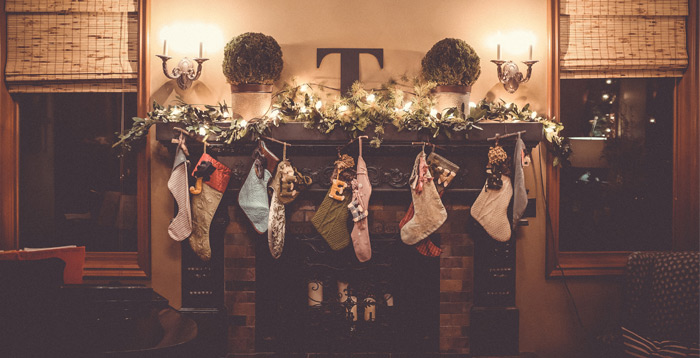Christmas Fire Safety Tips
Rule Number One: Test Your Smoke Alarms
When it comes to fire safety at home, there are few things more effective than working smoke alarms. Test your smoke alarms regularly, make sure that batteries are in good shape and that aging smoke alarms are replaced. It is currently recommended that all smoke detectors are replaced after ten years.
This isn’t a ploy to keep smoke alarm manufacturers in business – it’s based on evidence. After ten years of service, there’s roughly a 30% probability of smoke alarm failure. Sensitivity can also drift with age, making false alarms more likely, which in turn can lead to people disconnecting the battery from their bothersome smoke alarm – which can sadly be a fatal mistake.
So before anything else, make sure your smoke detectors are in full working order this Christmas.
In offices, smoke alarms tend to be hardwired in, but that doesn’t make them immune to failure. Regular tests are still needed, and the same ten year replacement rule applies.
Christmas Trees
Choosing your Christmas tree is one of the best bits of the holiday, and leaves everyone feeling Christmassy. When you’re picking a real tree for your living room or office, always go for the best looking one. Well, that might seem a tad obvious – but actually, the best looking tree is usually the safest one too.
That’s because a tree with fresh green needles that don’t fall off when touched has good moisture content. That makes it more fire resistant and means it will keep for longer too. The drier a tree, the easier it will burn. And when you throw lights into the mix, that dryness and heat from the lights can become a dangerous mix. Watering your tree is a must, not just to keep it looking amazing for longer, but to keep it fire resistant for longer.
When the festivities are over, you should safely dispose of your tree as soon as possible.
Plastic Christmas trees are convenient, reusable and largely recyclable – but they’re not always fire resistant and can burn ferociously without too much encouragement. Keep them away from fireplaces, candles and sources of heat, just as you would a real tree.
Christmas Lights
Today’s fairy lights are made with LEDs and are often battery powered, which minimises the risk of electrical fire. But plenty of us are still using the old filament-type bulbs, draping them over our Christmas trees, mantlepiece and workplaces. Those filaments glow because of heat: and heat can lead to fire.
If your old lights are still going strong, make sure they’re running safely – keep them away from paper decorations or any other flammable materials. Make sure not to leave them on overnight or while you’re away from home or the office.
Maintenance is important too. Make sure any broken or blown bulbs are replaced and that your plug sockets aren’t overloaded.
Cooking
Our last lot of safety tips cover cooking, which at Christmas, is quite likely to be done after a few too many festive beverages. Try your best to avoid cooking while drunk – because more fires start in the kitchen than anywhere else.
Keeping stovetops free and turning appliances off after use are easy tasks for a sober chef, but even the most well-meaning Christmas cook can become forgetful and clumsy after a few drinks.
Even if you’re avoiding alcohol, take care in the kitchen to avoid fires starting. Cooking for more people is common over Christmas. Kitchens up and down the country become crowded and hectic – so try to keep things calm and make sure cooking surfaces are clear and safe.
We might not be able to help you from burning the potatoes, drying out the turkey or overdoing the sprouts – but we hope we’ve given you some festive safety tips to think about.
So here’s to a very merry Christmas and a happy, safe New Year!
Fire Protection Experts
Our expertise has led Coopers Fire to become a leader in fire safety. For more information on our non-intrusive, life-saving fire and smoke protection, or our educational training courses, call us on 02392 454 405 or email info@coopersfire.com.


